-
The preparation of phosphorylate polyclonal and monoclonal antibodies
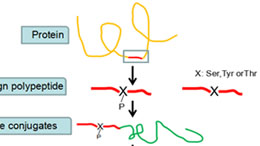
Recently,researches on the protein post-translational modification have becomea hot spotin area of the proteomics.The protein post-translational modification referringsome amino acids in the protein have been modified. There are kinds of proteinmodification,eg, Phosphorylation, glycosylation, methylation,acetylation, etc.Theprotein post-translational modification is one of the most important proteinmodifications.The protein post-translational modification consists of proteinkinases and phosphatases,which take part in a reversible process.It has foundthat the protein post-translational modification join in variety ofphysiological and pathological processes in vivo, such as glucose metab......
-
The high efficient technology on gene seamless-splicing
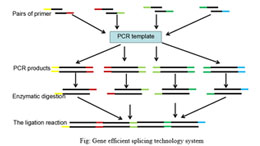
WithPCR technology develops, The door to the study of the essence of life hasopened.The PCR technology has become one of the most important technologies inthe last century.With the PCR ,we can amplify genes in vitro. Owning the targetgene fragment is the beginning for genetic modification,we need an efficienttool for gene processing----Gene-splicing techniques.In experiments,Gene-splicing techniques are play an impoertent role in them,eg: tranforminggene,tranforming plasmid, and tranforming species. In the 1989 ,Horton, etal. proposed the SEO technology.Geneswere spliced by over lap extension. In the 1991, Lebedenko et al. devised the SDLtechnology. Genes were spliced by directed ligat......
-
Primary Cell Culture: Principle and Application
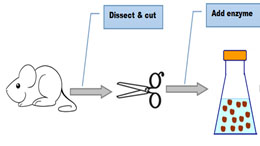
Primary cell culture is the process of single cellisolation from embryos, tissues and peripheral blood through special separationmethod, in-vitro cell culture in suitable culture medium, cell survival, growthand reproduction in the sterile system at appropriate temperature under certainconditions. The ‘apgebra’ for primary cell culture refers to the times for cellculture. It is the process from in-vivo tissue extraction, cell inoculationculture to the first cell subculture. It usually takes 1-4 weeks. Below is theflow chart for the common process of primary cell culture.The cell is directly derived from living tissues.In-vitro culture is also as far as possible to simulate the body......
-
NGAL(Neutrophilgelatinase-Associated Lipocalin), a Marker of Nephropathy of Immunological Detection
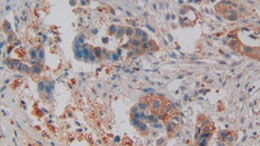
NGAL (neutrophilgelatinase-associated lipocalin) widely exists in human tissues, such asbronchial, stomach, small intestine, pancreas, kidney, prostate gland, thymus,etc.Inrecent years, it's found that NGAL is closely related to nephropathy. Manyexperimental and clinical data have shown that the expression of NGAL greatlyincreased after kidney injury. NGAL has been considered as a novel biochemicalmarker in early nephropathy. It issignificant toprepare thespecific anti-NGALantibody and establish its immune detection system.Cloud-CloneCorp. has developed recombinant human NGAL (RPB388Hu01), which is expressed in prokaryotic system. There are anti-NGALmonoclonal antibody (MAB388Hu22)......
-
Protein with Activity 1——MCSF1 (Colony Stimulating Factor 1, Macrophage)
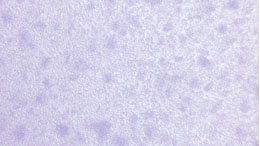
Generally, protein could be used as immunogen based ontheir amino acid sequence. Moreover, protein will possess specific biologicalfunctions while they get spatial conformation, and various kinds of functionsof different proteins will lead to physical functions of organism. So, theresearch of active protein is a hot spot of biological and medical researchfield. As researchers need to use biological active proteins, but natural onesare difficult to obtain, so, most of the native proteins used are generatedform genetic engineering..There are several steps and expression methods to getproteins by genetic engineering. But, it is necessary to select gene sequence,expression system and activ......
-
The total protein quantitative method: Introduction and Advantages & Disadvantages.
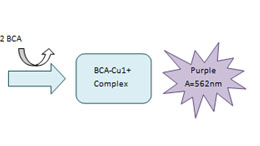
Protein quantification isan indispensable part of the biology experiment, this technique has been widelyused in many fields and industries, including biology, food inspection,clinical examination, diagnosis. It is very common and important to make accurateand reliable quantitative analysis of protein in samples in the actualoperation process. Although so many protein quantitative methods can be usedfor the purpose, there is no a generaland ideal protein quantitive detection method, which is suitable for all kindssituations. It is because of the great variety protein type, diversity instructure, big variance in molecular weight and different functions. Now weintroduce the common protein......
